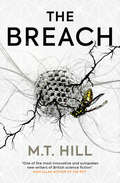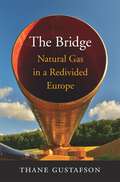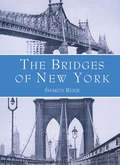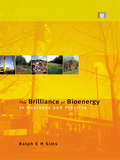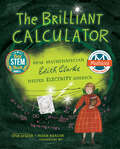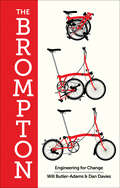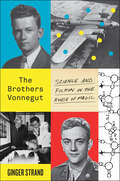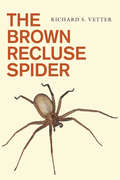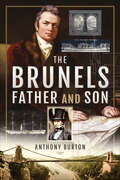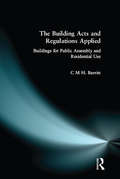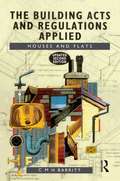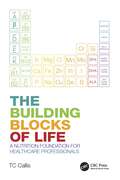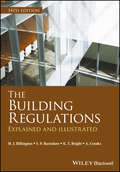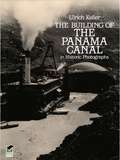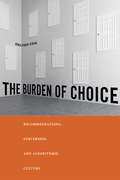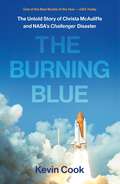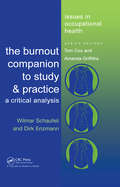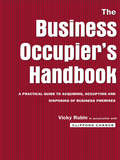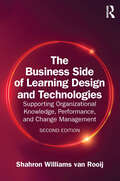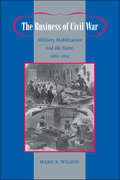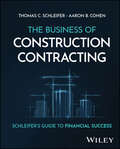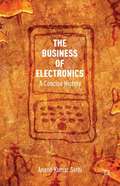- Table View
- List View
The Breach
by M.T. HillFrom Philip K. Dick Award-nominated author M.T. Hill, The Breach is a unique science fiction mystery set in the dangerous underground world of the urban exploration scene.Freya Medlock, a reporter at her local paper, is down on her luck and chasing a break. When she's assigned to cover the death of a young climber named Stephen, she might just have the story she needs. Digging into Stephen's life, Freya uncovers a strange photo uploaded to an urban exploration forum not long before he died. It seems to show a weird nest, yet the caption below suggests there's more to it.Freya believes this nest - discovering what it really is and where it's hidden - could be the key to understanding the mysteries surrounding Stephen's death.Soon she meets Shep, a trainee steeplejack with his own secret life. When Shep's not working up chimneys, he's also into urban exploration - undertaking dangerous 'missions' into abandoned and restricted sites. As Shep draws Freya deeper into the urbex scene, the circumstances of Stephen's death become increasingly unsettling - and Freya finds herself risking more and more to get the answers she wants.But neither Freya nor Shep realise that some dark corners are better left unlit.
The Bridge: Natural Gas in a Redivided Europe
by Thane GustafsonEurope and Russia are pushing against each other in a contest of economic doctrines and political ambitions, seemingly erasing the vision of cooperation that emerged from the end of the Cold War. Thane Gustafson argues that natural gas serves as a bridge over troubled geopolitical waters, uniting the region through common economic interests.
The Bridges of New York (New York City)
by Sharon ReierNew York City boasts more spectacular bridges than any other city in the world. From the Gothic stone arches and gossamer steel webbing of the Brooklyn Bridge (perhaps the greatest engineering achievement of the 19th century), to the Verrazano-Narrows — the world's longest suspension bridge when completed in 1964 — more than 75 bridges span the city's waterways. This book is a stirring text-and-picture tribute to these awe-inspiring structures.Beginning with Dutch New Amsterdam and continuing to the modern era and the achievements of legendary bridge builder Robert Moses, The Bridges of New York covers nearly 300 years of New York history and a century of accomplishments in modern engineering. At the time of construction, many of the bridges were considered breakthroughs in bridge-building technology.Grouped according to geography and economics — two prime considerations facing bridge engineers — the spans are described in a highly readable text that explains the design principles of cantilever, swing, bascule, and many other bridge types. Over 150 archival engravings and contemporary photographs document the splendor of such remarkable bridges as the Brooklyn, George Washington, Bronx-Whitestone, Manhattan, Queensboro, Triborough, and dozens of smaller spans.A section on bridge maintenance, a glossary, and charts noting each bridge's location, length, height, and other features complete this pictorial treasury — sure to delight engineering and architecture enthusiasts as well as anyone who has ever been astonished by the extraordinary scale and grandeur of New York's bridges.
The Brilliance of Bioenergy: In Business and In Practice
by Ralph E SimsThe time for modern biomass has come. It has long been overshadowed by other, more widely-publicized renewable energy technologies such as wind, solar and hydro, and still retains an outmoded image in comparison to its apparently more attractive cousins. The potential for biomass to act as a store of solar energy, and yet to be converted efficiently when required into heat, power, transport fuels and even substitutes for plastics and petrochemicals, is not widely appreciated. The increasing abundance of well-designed, successful bioenergy projects around the world is creating new interest in this renewable, sustainable and low-emission-producing source of energy. The Brilliance of Bioenergy covers all the main resources and technologies, principles, practice, social and environmental issues as well as the economics involved. The book also presents valuable, practical experiences - both 'how to' and 'how not to' - in the form of case studies of both small and large scale projects in both developed and developing countries. The Brilliance of Bioenergy is for those wishing to learn more about biomass, the technologies and the business potential. It will be welcomed by all involved in biomass production, bioenergy utilization, planning and development, and in renewable energies in general, as well as students, academics and researchers in the subject.
The Brilliant Calculator: How Mathematician Edith Clarke Helped Electrify America
by Jan LowerHidden Figures meets Rosie Revere, Engineer in this STEM/STEAM picture book about Edith Clarke, the innovator who solved an electrical mystery and built the first graphing calculator—from paper!Long before calculators were invented, little Edith Clarke devoured numbers, conquered calculations, cracked puzzles, and breezed through brainteasers. Edith wanted to be an engineer—to use the numbers she saw all around her to help build America.When she grew up, no one would hire a woman engineer. But that didn&’t stop Edith from following her passion and putting her lightning-quick mind to the problem of electricity. But the calculations took so long! Always curious, Edith couldn&’t help thinking of better ways to do things. She constructed a &“calculator&” from paper that was ten times faster than doing all that math by hand! Her invention won her a job, making her the first woman electrical engineer in America. And because Edith shared her knowledge with others, her calculator helped electrify America, bringing telephones and light across the nation.
The British Police and Home Food Production in the Great War: Police as Ploughmen, 1917–1918
by Mary FraserThis book explores the role of the British Police in home food production during the First World War, a critical time when decreasing food imports threatened population starvation around the country. Drawing from the police’s most popular weekly journal, the book provides insights into policemen’s lives, the political context in which they worked, and the pressures on police forces throughout Britain during the Great War. Unlike neighbouring countries in Europe, Britain avoided major food riots due to government control of farming from December 1916, which prioritised agriculture to feed the nation. The police force released over 400 policemen in England and Scotland to serve as ploughmen from March 1917 for around two months. Almost a third of policemen throughout Britain had previous agricultural backgrounds and so were welcomed by farmers as experienced workers. This book illustrates not only why the food crisis arose and the state of British farming during the war, but it also sheds light on how individual police forces were approached and encouraged to release their policemen, at a time when police forces themselves were critically short of staff due to recruitment into the war. The author discusses how the release of policemen into agriculture as first responders benefitted the police and provided surveillance over home food production in the national interest.
The Broken Universe (John Rayburn Universe)
by Paul MelkoA thrilling adventure that spans alternate universes, filled with multiple doppelgängers, transdimensional corporate takeovers, and a struggle for survival across the multiverse.Possessing technology that allows him to travel across alternate worlds, John Rayburn begins building a transdimensional commercial empire, led by him, his closest friends, and their doppelgängers from several different parallel universes. But not every version of every person is the same, and their agendas do not always coincide. Despite their benign intentions, the group's activities draw unwanted attention from other dimensional travelers who covet their technology and will kill anyone to control it, a threat that culminates in a nuclear standoff for dominance throughout the multiverse.Sequel to The Walls of the UniverseAt the Publisher's request, this title is being sold without Digital Rights Management Software (DRM) applied.
The Brompton: Engineering For Change
by Dan Davies William Butler-AdamsThe story of how Brompton, the iconic folding bicycle that you can take anywhere—and that can take you anywhere—grew from a small cult bike company to a multimillion-dollar business Lightweight, compact, distinctively styled, and now, electric: The Brompton isn’t the only folding bicycle—or even the first. But everyone who has been on one will enthusiastically testify to its marvelous design (virtually unchanged over decades) and the particular joy of riding it. Will Butler-Adams, CEO of Brompton Bicycles, has been at the company for twenty years. Initially, he worked as an engineer for Andrew Ritchie, the bike’s brilliant inventor and the business’s founder, before taking the helm in 2008. Butler-Adams’s heartfelt mission is to grow and promote sustainable urban transportation and to improve city-dwellers’ lives everywhere. Under his leadership, Brompton has grown from making a few hundred bikes a year to over 90,000, with revenue of $130 million. But progress hasn’t always been easy: There have been boardroom struggles, supply-chain problems, and conflicts with founder Andrew Ritchie. In The Brompton, Butler-Adams brings to life what it means to grow a company to global scale. He also tells the stories of the people who make the Brompton and the people who ride it. And he explains how customers all around the world fell in love with a brand that never set out to be a brand.
The Brothers Vonnegut: Science and Fiction in the House of Magic
by Ginger StrandWorlds collide in this true story of weather control in the Cold War era and the making of Kurt VonnegutIn the mid-1950s, Kurt Vonnegut takes a job in the PR department at General Electric in Schenectady, where his older brother, Bernard, is a leading scientist in its research lab--or "House of Magic." Kurt has ambitions as a novelist, and Bernard is working on a series of cutting-edge weather-control experiments meant to make deserts bloom and farmers flourish.While Kurt writes zippy press releases, Bernard builds silver-iodide generators and attacks clouds with dry ice. His experiments attract the attention of the government; weather proved a decisive factor in World War II, and if the military can control the clouds, fog, and snow, they can fly more bombing missions. Maybe weather will even be the "New Super Weapon." But when the army takes charge of his cloud-seeding project (dubbed Project Cirrus), Bernard begins to have misgivings about the harmful uses of his inventions, not to mention the evidence that they are causing alarming changes in the atmosphere.In a fascinating cultural history, Ginger Strand chronicles the intersection of these brothers' lives at a time when the possibilities of science seemed infinite. As the Cold War looms, Bernard's struggle for integrity plays out in Kurt's evolving writing style. The Brothers Vonnegut reveals how science's ability to influence the natural world also influenced one of our most inventive novelists.
The Brown Recluse Spider
by Richard S. VetterThe brown recluse is a fascinating spider very well adapted to dwelling in houses and other buildings. Because of this very quality and the ghastly reputation associated with the medical consequences of its bite, it has become infamous throughout North America. Although recluse spiders can cause serious skin injuries and, in very rare cases, death, the danger posed by this spider is often exaggerated as a result of arachnophobia and the misdiagnosis of non-spider-related conditions as brown recluse bites. These misdiagnoses often occur in areas of North America where the spider does not exist, making legitimate bites improbable. One of the greatest factors that keeps the myths alive is misidentification of common (and harmless) spiders as brown recluses. With this book, Richard S. Vetter hopes to educate readers regarding the biology of the spider and medical aspects of its bites, to reduce the incidence of misdiagnoses, and to quell misplaced anxiety. In The Brown Recluse Spider, Vetter covers topics such as taxonomy, identification, misidentification, life history characteristics and biology, medical aspects of envenomations, medical conditions misdiagnosed as brown recluse bites, other spider species of medical consideration (several of which have been wrongly implicated as threats to human health), and the psychology behind the entrenched reasons why people believe so deeply in the presence of the spider in the face of strong, contradictory information. Vetter also makes recommendations for control of the spider for households in areas where the spiders are found and describes other species of recluse spiders in North America. Although The Brown Recluse Spider was written for a general audience, it is also a valuable source of information for arachnologists and medical personnel.
The Brunels: Father and Son
by Anthony BurtonIsambard Kingdom Brunel has always been regarded as one of Britain’s great heroes and an engineering genius. His father Marc Brunel has not received the same degree of adulation, but this book will show just how important a part Marc played in his son’s works and will also look at his own great achievements. Marc Brunel arrived in Britain as a refugee from revolutionary France, after a short time working in America. He was a pioneer of mass production technology, when he invented machines for making blocks for sailing ships. He had other inventions to his name, but his greatest achievement was in constructing the very first tunnel under the Thames. Isambard spent his early years working for and with is father, who not only encouraged him but throughout his career he was also able to offer practical help. The famous viaduct that carried the Great Western Railway over the Thames at Maidenhead, for example was based on an earlier design of Marc’s. Isambard’s greatest achievements were in revolutionizing the shipping industry, where hew as able to draw on his father’s experience when he served in the navy. The book not only looks at the successes of two great engineers, but also their failures. Primarily, however, it is a celebration of two extraordinary mean and their amazing achievements.
The Building Acts and Regulations Applied: Buildings for Public Assembly and Residential Use
by C.M.H. BarrittThis book forms part of a unique, highly practical and time-saving three volume presentation of the Building Regulations, each book covering all the regulations relating to specific building usage. The chapters of each volume form self-contained units covering all the Regulation requirements applicable to a particular part of a building; thus the reader can ensure that all the Regulations are fully met. Also included is a digest of published standards, guides and technical information as well as reviews of the new Eurocodes currently being introduced.The Building Acts and Regulations Applied: Buildings for Public Assembly and Residential Use covers all the regulations relating to buildings used for public assembly or residential purposes (other than houses and flats), such as theatres, sports stadia, hotels, prisons and halls of residence. It is a useful course companion for BTEC HNC/D and degree courses in building, architecture, surveying, estate management and other built environment disciplines. It is also an ideal reference source for all professionals working in these areas.
The Building Acts and Regulations Applied: Houses and Flats
by C.M.H. BarrittThis newly revised edition is an up-to-date and concise volume, clarifying the Building Acts and Regulations relating to houses, flats and maisonettes, for all construction professionals and students.Each chapter forms a self-contained unit covering all the regulation requirements applicable to a particular part of a building, dealing with each part in turn. With this single volume, professionals can ensure that all regulations are fully covered in respect of houses, flats and maisonettes. Inclusion of the July 1995 changes in the Acts and Regulations ensures the text provides the very latest information.An ideal reference book for architects, builders, structural and building services engineers. Essential supplementary reading for students undertaking courses in any of the above at HNC, HND and degree level.
The Building Blocks of Life: A Nutrition Foundation for Healthcare Professionals
by TC CallisWithin the United Kingdom (UK), most mainstream healthcare practitioners receive little or no nutrition education during their years of training. As a consequence, the understanding of nutrition amongst primary care practitioners such as general practitioners, pharmacists, midwives, and practice nurses is limited and is largely focused on energy consumption and obesity. There is little knowledge of the wealth of micronutrients that underpin health, nor of the ticking timebomb of insufficient intakes of those micronutrients amongst a significant proportion of the population in the UK.The Building Blocks of Life: A Nutrition Foundation for Healthcare Professionals is a step towards redressing that balance. It sets out an informative and engaging narrative on how and why nutrition is the basis for good health. It discusses UK-specific issues with regards to diet and intakes of vitamins, minerals, essential fatty acids and other micronutrients. It also raises concerns about the potential negative health implications of the generally poor UK diet and suggests ways that healthcare practitioners can support patients in improving their long-term health outlook.Nutrition policy in the UK needs to be dragged into the 21st century and this book sets out evidence-based arguments which challenge current public health myths such as the idea that 10 micrograms of vitamin D is all anyone needs or the messaging around the consumption of saturated fat vs highly processed seed oils or that everyone can get all the nutrients they need from a varied and balanced diet.Although The Building Blocks of Life: A Nutrition Foundation for Healthcare Professionals focuses on concerns around poor diet and the consequent micronutrient inadequacies in the UK, the nutritional detail is relevant no matter where you are in the world. Everyone eats, all the time. It is time that mainstream medicine looked towards food as both a cause and a solution to many of the chronic degenerative conditions that plague modern life.
The Building Regulations: Explained and Illustrated
by M. J. Billington A. Crooks K. T. Bright S. P. BarnshawSince publication of the first edition in 1976, The Building Regulations: Explained and Illustrated has provided a detailed, authoritative, highly illustrated and accessible guide to the regulations that must be adhered to when constructing, altering or extending a building in England and Wales. This latest edition has been fully revised throughout. Much of the content has been completely rewritten to cover the substantial changes to the Regulations since publication of the 13th edition, to ensure it continues to provide the detailed guidance needed by all those concerned with building work, including architects, building control officers, Approved Inspectors, Competent Persons, building surveyors, engineers, contractors and students in the relevant disciplines.
The Building of the Panama Canal in Historic Photographs
by Ulrich KellerIn 1889 the Compagnie Universelle du Canal Interocéanique declared bankruptcy. The French firm's optimistic and ill-planned attempt to construct a canal across the Isthmus of Panama had resulted in the death of 22,000 workers (most from yellow fever, typhoid fever, and malaria); the complete loss of one and a half billion francs for the company's 800,000 shareholders; and the bitter failure of Chief Engineer Ferdinand de Lesseps -- the man responsible for the Suez Canal. On August 15, 1914, the S.S. Ancon took nine hours and forty minutes to traverse the lock-and-lake waterway linking the Atlantic and Pacific Oceans. What occurred in the quarter century between 1889 and 1914 is a larger-than-life true story of adventure, revolution, ordeal, and accomplishment: the building of the Panama Canal -- perhaps the greatest engineering marvel of the early twentieth century.In 164 magnificent historic photographs and a well-researched text, noted photohistorian Ulrich Keller tells the compelling story of this hitherto unparalleled technological achievement. Selected from an archive of over 10,000 images amassed by Ernest Hallen (Official Photographer of the Isthmian Canal Commission), these historic prints document the Canal's construction and its way of life: 450 miles of railroad; housing for 60,000 based on a caste system; the exotic settings; tremendous hardships and health risks; leisure activities; the Canal Zone's internal government, administration and policing; dredging operations, including spectacular movements of earth and water; unheard-of engineering feats and disastrous failures; and finally, victory!Photographers, historians, engineers, and tudents of industry and technology will immediately recognize this volume as an important primary source of industrial archaeology. Photography enthusiasts and lovers of true adventure will delight in the vibrant, you-are-there sensation imparted by the photos and Ulrich Keller's exceptionally informed text and meticulous captions. The Building of the Panama Canal in Historic Photographs takes the reader back to a different era, and one of the proudest episodes in what the author calls "the 'heroic' age of industry."
The Burden of Choice: Recommendations, Subversion, and Algorithmic Culture
by Jonathan CohnThe Burden of Choice examines how recommendations for products, media, news, romantic partners, and even cosmetic surgery operations are produced and experienced online. Fundamentally concerned with how the recommendation has come to serve as a form of control that frames a contemporary American as heteronormative, white, and well off, this book asserts that the industries that use these automated recommendations tend to ignore and obscure all other identities in the service of making the type of affluence they are selling appear commonplace. Focusing on the period from the mid-1990s to approximately 2010 (while this technology was still novel), Jonathan Cohn argues that automated recommendations and algorithms are far from natural, neutral, or benevolent. Instead, they shape and are shaped by changing conceptions of gender, sexuality, race, and class. With its cultural studies and humanities-driven methodologies focused on close readings, historical research, and qualitative analysis, The Burden of Choice models a promising avenue for the study of algorithms and culture.
The Burnhope Wheel
by Susan GatesThe Burnhope Wheel tells the story of Ellen and Dave, two teens who have a strange attraction to the abandoned Burnhope lead mine. Ellen finds a photograph of two miners who were killed in an accident, and soon after begins hearing the voice of one of the miners in her head. Together, Ellen and Dave find the treasure that had led to the deaths of the two miners, and almost meet the same fate themselves when the mine suddenly seems to come alive and the dead miner gains control over Ellen's mind.
The Burning Blue: The Untold Story of Christa McAuliffe and NASA's Challenger Disaster
by Kevin CookThe untold story of a national trauma—NASA’s Challenger explosion—and what really happened to America’s Teacher in Space, illuminating the tragic cost of humanity setting its sight on the starsYou’ve seen the pictures. You know what happened. Or do you?On January 28, 1986, NASA’s space shuttle Challenger exploded after blasting off from Cape Canaveral. Christa McAuliffe, America’s “Teacher in Space,” was instantly killed, along with the other six members of the mission. At least that's what most of us remember.Kevin Cook tells us what really happened on that ill-fated, unforgettable day. He traces the pressures—leading from NASA to the White House—that triggered the fatal order to launch on an ice-cold Florida morning. Cook takes readers inside the shuttle for the agonizing minutes after the explosion, which the astronauts did indeed survive. He uncovers the errors and corner-cutting that led an overconfident space agency to launch a crew that had no chance to escape.But this is more than a corrective to a now-dimming memory. Centering on McAuliffe, a charmingly down-to-earth civilian on the cusp of history, The Burning Blue animates a colorful cast of characters: a pair of red-hot flyers at the shuttle's controls, the second female and first Jewish astronaut, the second Black astronaut, and the first Asian American and Buddhist in space. Drawing vivid portraits of Christa and the astronauts, Cook makes readers forget the fate they're hurtling toward. With drama, immediacy, and shocking surprises, he reveals the human price the Challenger crew and America paid for politics, capital-P Progress, and the national dream of "reaching for the stars."
The Burnout Companion To Study And Practice: A Critical Analysis
by Wilmar Schaufeli D. EnzmannBurnout is a common metaphor for a state of extreme psychophysical exhaustion, usually work-related. This book provides an overview of the burnout syndrome from its earliest recorded occurrences to current empirical studies. It reviews perceptions that burnout is particularly prevalent among certain professional groups - police officers, social workers, teachers, financial traders - and introduces individual inter- personal, workload, occupational, organizational, social and cultural factors. Burnout deals with occurrence, measurement, assessment as well as intervention and treatment programmes. This textbook should prove useful to occupational and organizational health and safety researchers and practitioners around the world. It should also be a valuable resource for human resources professional and related management professionals.
The Business Occupier's Handbook: A Practical guide to acquiring, occupying and disposing of business premises
by Clifford Chance Vicky RubinWhatever your type of business, this practical handbook will help you to manage your premises effectively. Whether you are a tenant or an owner-occupier, it will enable you to take an informed approach to commercial property, helping you to negotiate successful transactions, deal with ongoing management issues effectively and get the most from advisers and agents. The handbook takes a practical approach using worked examples and checklists. It provides a step-by-step guide to all the stages of occupation with comprehensive coverage of all the relevant legal and technical information, including: * strategic property management * financial analysis and decision making * negotiating strategy * valuaton * accounting * tax and business rates * acquisitions * purchase and lease terms * rent reviews * service charges * insurance * repairs alterations and use * planning and environmental issues* disposal of surplus space * lease expiries and renewals * compulsory purchase.
The Business Side of Learning Design and Technologies: Supporting Organizational Knowledge, Performance, and Change Management
by Shahron Williams van RooijThe Business Side of Learning Design and Technologies provides actionable tools and techniques for recognizing the impact of learning design/technology decisions at the project, business unit, and organizational levels. With a focus on aligning learning initiatives with organizational objectives, the book equips early- and mid-career learning designers with essential skills in applying business strategy, artificial intelligence, data analytics, and change management to the selection, design, implementation, and evaluation of learning opportunities. This thoroughly revised second edition further emphasizes the designer as change agent, addresses the rise of remote and hybrid workplaces, adds fresh perspectives on automated and generative systems, and updates its resources, references, and interviews. Grounded in scholarly and practitioner research, systematic literature reviews, interviews with learning and development thought leaders, and real-world experience, this book provides actionable strategies for career advancement in a dynamic labor market.
The Business of Civil War: Military Mobilization and the State, 1861–1865 (Johns Hopkins Studies in the History of Technology)
by Mark R. WilsonThis wide-ranging, original account of the politics and economics of the giant military supply project in the North reconstructs an important but little-known part of Civil War history. Drawing on new and extensive research in army and business archives, Mark R. Wilson offers a fresh view of the wartime North and the ways in which its economy worked when the Lincoln administration, with unprecedented military effort, moved to suppress the rebellion. This task of equipping and sustaining Union forces fell to career army procurement officers. Largely free from political partisanship or any formal free-market ideology, they created a mixed military economy with a complex contracting system that they pieced together to meet the experience of civil war. Wilson argues that the North owed its victory to these professional military men and their finely tuned relationships with contractors, public officials, and war workers. Wilson also examines the obstacles military bureaucrats faced, many of which illuminated basic problems of modern political economy: the balance between efficiency and equity, the promotion of competition, and the protection of workers' welfare. The struggle over these problems determined the flow of hundreds of millions of dollars; it also redirected American political and economic development by forcing citizens to grapple with difficult questions about the proper relationships among government, business, and labor. Students of the American Civil War will welcome this fresh study of military-industrial production and procurement on the home front—long an obscure topic.
The Business of Construction Contracting: Schleifer's Guide to Financial Success
by Thomas C. Schleifer Aaron B. CohenExplore this deep dive into the business side of construction, including how to structure, organize, and operate a construction organization to maximize profit The most visible work of construction contracting happens on the job site, but some of the most important aspects of running a construction business happen behind the scenes, on the financial and operations side. Construction is the second-most risk-intensive industry in the US, and both minimizing business failures and minimizing the damage that results from inevitable failures are critical. Structuring and managing a profitable construction business requires strategic sense and up-to-date knowledge. The Business of Construction Contracting describes and analyzes the business side of construction, with a detailed exploration of the major types of business failure and how to avoid them. It’s designed for construction professionals who understand that in this industry everybody faces risk exposure, and the companies that survive and thrive are the ones who understand how to recognize the risks and respond accordingly. It offers documented research findings, rooted in years of construction business experience, that can help both new and veteran business owners find success. The Business of Construction Contracting readers will also find: Exploration of the concepts of flexible overhead, corporate, and financial self-analysisDetailed discussion of topics including cash flow thresholds, construction market cycles, and moreThe latest industry technologies and techniques to manage a construction business The Business of Construction Contracting is ideal for construction professionals – including general contractors, construction managers, and specialty contractors – as well as bonding and insurance professionals, construction attorneys, and vendors servicing the construction industry.
The Business of Electronics
by Anand Kumar SethiElectronics is an ever-changing field with an entrepreneurial spirit and a rich history, populated by some of the world's most famous companies and personalities. The Business of Electronics details the field's complex ecosystem in all its trials and tribulations. It looks at companies such as Apple, IBM, Samsung, and Nokia, as well as now-extinct companies such as Honeywell Bull (France) and Sinclair Computers (UK) that contributed to technology and business. Sethi shows us how a handful of US companies led the charge in designing equipment that could make millions of small, reliable components; how Nokia started in the timber business; the history of inventors like J. C. Bose, a pioneer in radio communication (who inadvertently made Guglielmo Marconi famous); and why there are numerous companies and creators that never made it or that we have never heard of. This all-encompassing book not only explores the vibrant history of electronics, it uses case studies to examine the companies and people that made history and explain how we ended up where we are today.
